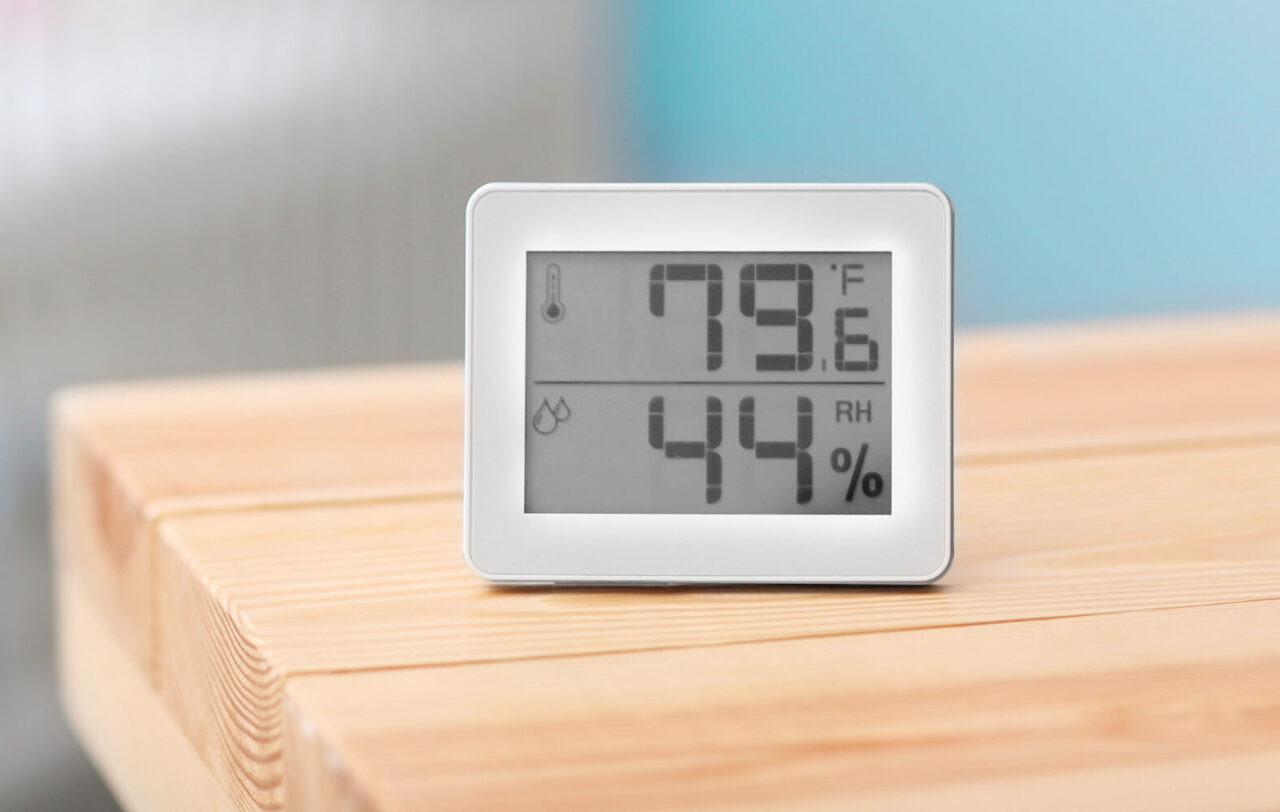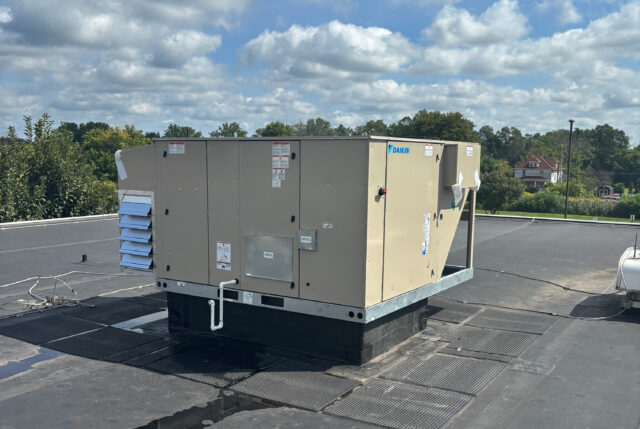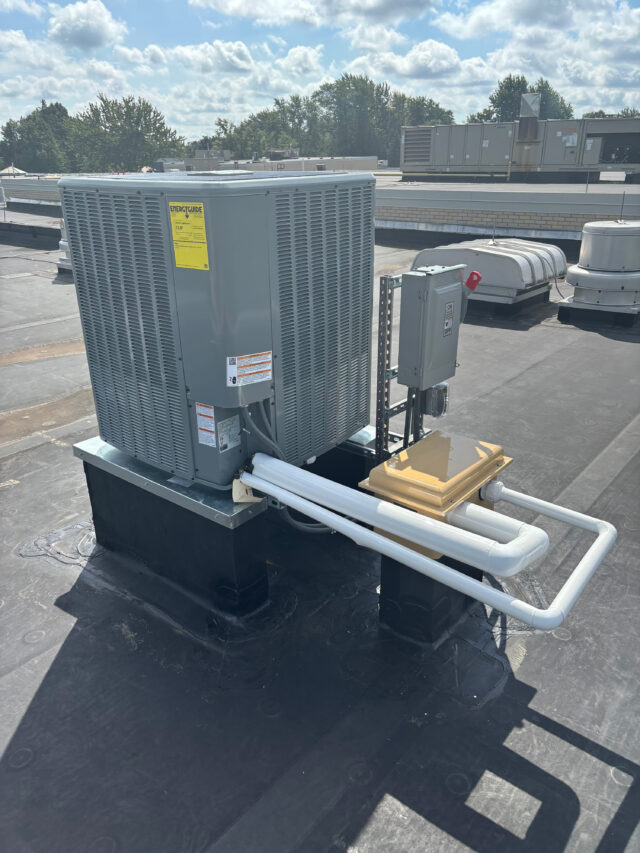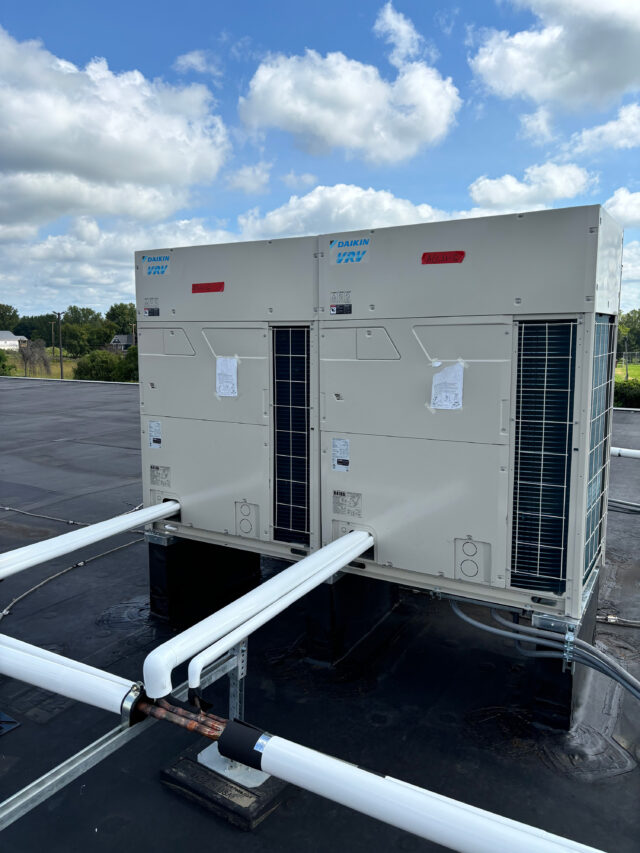On December 13, 2024, Governor Kathy Hochul signed legislation (A9011A/S3397A) establishing maximum temperature limits for K-12 classrooms across New York State. Strongly supported by the New York State United Teachers (NYSUT), this law aims to protect students and staff from excessive heat in classrooms. High temperatures affect not just comfort, but also cognitive function, attention, and test scores. Numerous studies have demonstrated that excessively warm classroom environments negatively impact student performance, particularly in core academic areas like reading and math.
While the law does not explicitly mandate air conditioning in every classroom, it requires schools to develop comprehensive solutions for maintaining safe indoor temperatures. For many schools—especially those in older buildings—compliance will pose significant challenges, from outdated electrical systems and limited mechanical space to rising energy costs and evolving refrigerant regulations. Addressing these factors will require careful planning and a combination of short-term mitigation measures and long-term infrastructure investments.
At this time, the specific enforcement mechanism for the new temperature limits has not been clearly defined. While ventilation requirements fall under the New York State Mechanical Code and are enforced by the New York State Education Department (NYSED) through design review and permit approvals, it remains uncertain whether NYSED will play an active role in monitoring compliance through inspections or audits.

Key Requirements
Schools must take immediate actions to relieve heat-related discomfort when indoor temperatures reach critical levels.
Temperature Thresholds and Required Actions:
- Alert Level (82°F): When classroom temperatures reach 82°F or higher, schools must implement measures to reduce heat stress. These include turning off overhead lights, closing blinds or shades, increasing ventilation with fans or by opening classroom windows and doors, shutting down heat-producing electronics, and ensuring students and staff have access to water breaks.
- Evacuation Level (88°F): If indoor temperatures exceed 88°F, classrooms and related support services spaces cannot be occupied. Schools must develop a plan to relocate students and staff to alternative spaces whenever feasible. However, the law does not specify what happens if a district lacks available alternative spaces. In such cases, districts may need to send students home, likely as part of their emergency response plans.
How to Measure Temperature: According to the law, to ensure accuracy, room temperature must be measured consistently in a shaded location, three feet above the floor, and near the center of the room. However, the law does not specify how often temperature should be recorded, who is responsible for taking the measurements, what type of thermometer or sensor should be used, or if temperatures should be recorded and kept for a certain period of time.
Emergency Planning Requirements: Schools must now address extreme heat events as part of their emergency response protocols. Under Section 2801-a of New York State’s Education Law, districts are required to integrate heat emergency planning into their overall safety policies.
Implementation Timeline: The law takes effect on September 1, 2025, giving districts time to assess their facilities and develop appropriate policies to meet compliance requirements.
Challenges for School Buildings
Many of New York State’s school buildings were constructed decades ago, long before air conditioning was standard. Adding cooling systems to these facilities to meet modern temperature expectations presents several significant challenges.
Electrical Limitations: School buildings often have electrical systems that were not originally designed to support the additional load required for air conditioning. Many older systems operate on 208V or 240V systems, which may be insufficient for larger or modern cooling equipment. Energy-efficient systems often require 480V 3-phase power. Upgrading electrical systems may involve replacing electrical panels, updating transformers, or increasing service capacity from utility providers.
Energy and Cost Concerns: Adding air conditioning will significantly increase energy consumption and utility costs. Without proper management, peak electrical demand charges could become a major expense. School districts will need to balance temperature requirements with budget constraints while optimizing energy efficiency.
Space and Infrastructure Constraints: Some buildings, especially those constructed before air conditioning was common, may lack the mechanical rooms, ductwork, ceiling plenum space, or structural capacity needed for traditional cooling systems. Installing ducted air conditioning in these buildings can be challenging and may require costly structural modifications to accommodate these systems.
A2L Refrigerant Transition: As environmental regulations phase out commonly used refrigerants like R-410A, lower-emission alternatives such as R-32 and R-454B are becoming the new standard. These newer refrigerants offer environmental benefits but are also classified as mildly flammable, requiring schools to plan carefully for safety and code compliance—particularly when using Variable Refrigerant Flow (VRF) systems, which involve long runs of refrigerant piping throughout buildings.
Practical Recommendations for School Districts
To prepare for compliance and avoid costly mistakes, school districts should consider the following steps:
Conduct a Comprehensive Assessment: Before selecting a cooling system, districts should evaluate their electrical service capacity to determine if upgrades are needed, perform a full mechanical assessment to explore viable cooling options, and identify any spatial and structural limitations that may impact system selection.
Explore Alternative Cooling Solutions: Rather than defaulting to conventional air conditioning systems, districts should consider more efficient alternatives. Chiller-based hydronic cooling systems, which circulate water instead of refrigerant, are a viable option. Heat pump chillers can further enhance efficiency by providing both heating and cooling. Additional energy-efficient alternatives include geothermal and high-efficiency air-source heat pumps, self-contained unit ventilators that can be retrofitted into existing classrooms, packaged rooftop units with dedicated outdoor air systems (DOAS), and displacement ventilation systems, which improve air distribution while requiring less cooling capacity.
Prioritize Energy Efficiency: To reduce operational costs, districts should invest in high-efficiency equipment that qualifies for utility incentives. Implementing building automation systems can further optimize cooling performance by adjusting settings based on real-time needs, lowering energy consumption. Demand-controlled ventilation strategies—already required in some cases by the New York State Energy Conservation Code and the New York State Education Department—also help minimize unnecessary energy use. Additionally, schools should leverage state and federal funding opportunities to support energy-efficient upgrades.
Plan for Refrigerant Compliance: As refrigerant standards evolve, it’s important to select systems that not only meet current regulations but are also adaptable to future codes and environmental goals. Planning for compliance goes beyond choosing the right equipment—it should also address ventilation strategies, leak detection, and building codes. Designing with safety and long-term performance in mind can further prevent future costs.
A Strategic, Long-Term Approach
While compliance deadlines may create pressure for quick solutions, successful implementation of New York State’s classroom temperature law requires more than just short-term fixes. A thoughtful, phased approach will yield more effective, lasting results. Schools can begin by addressing the most vulnerable spaces first, then develop multi-year plans to phase in broader improvements over time. Beyond immediate cooling measures, integrating ventilation, insulation, and shading enhancements—along with energy-efficient systems that reduce carbon footprint—will help optimize building performance and lower long-term operating costs. By investing in solutions that balance efficiency, sustainability, and cost-effectiveness, districts can not only meet the new requirements but also create safer, more comfortable learning environments for years to come.




